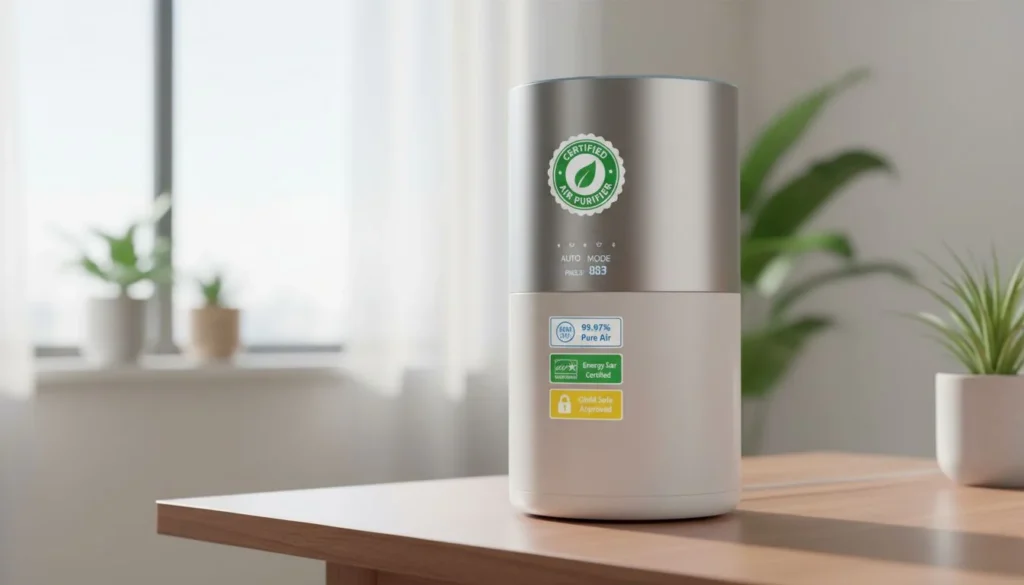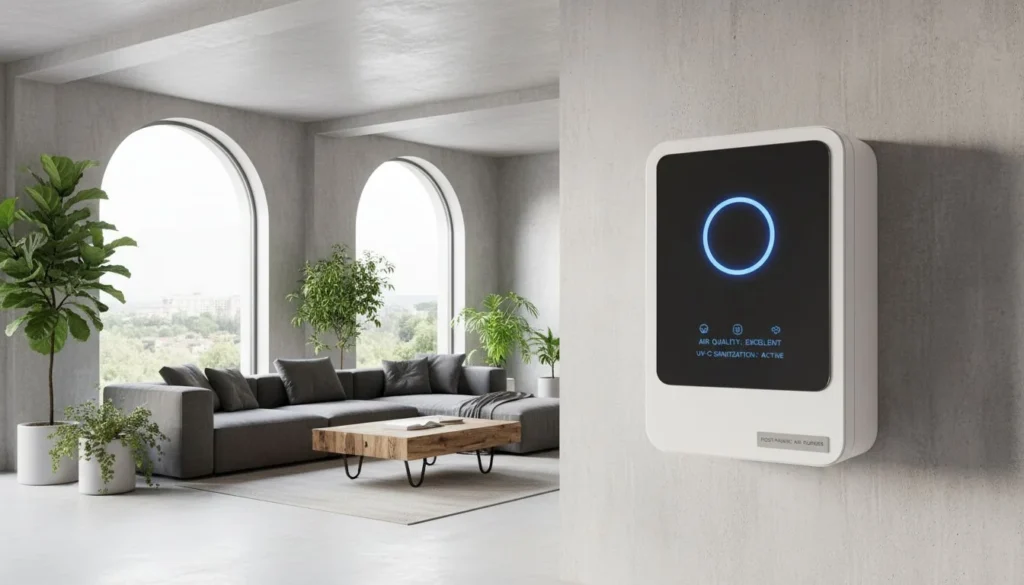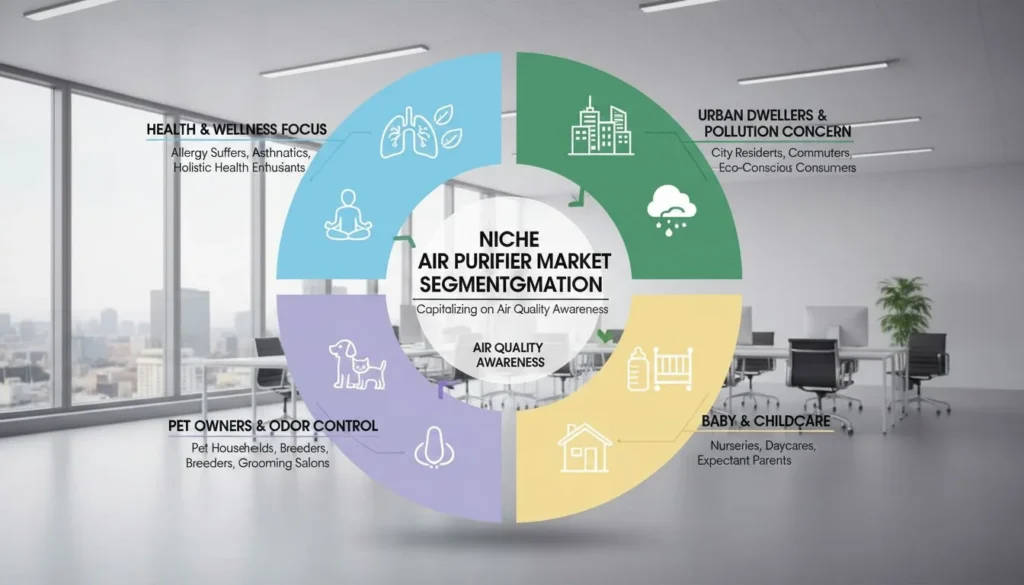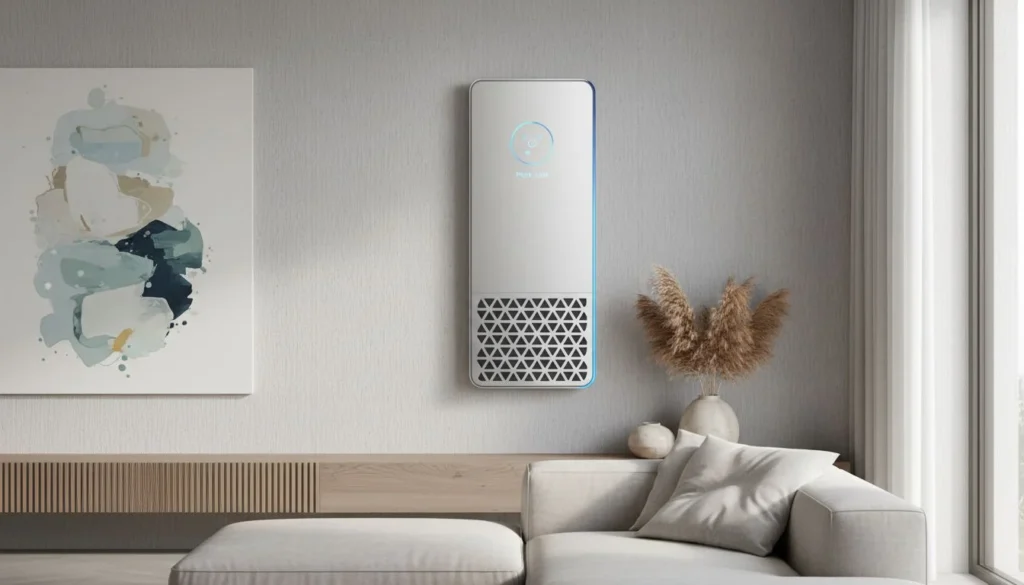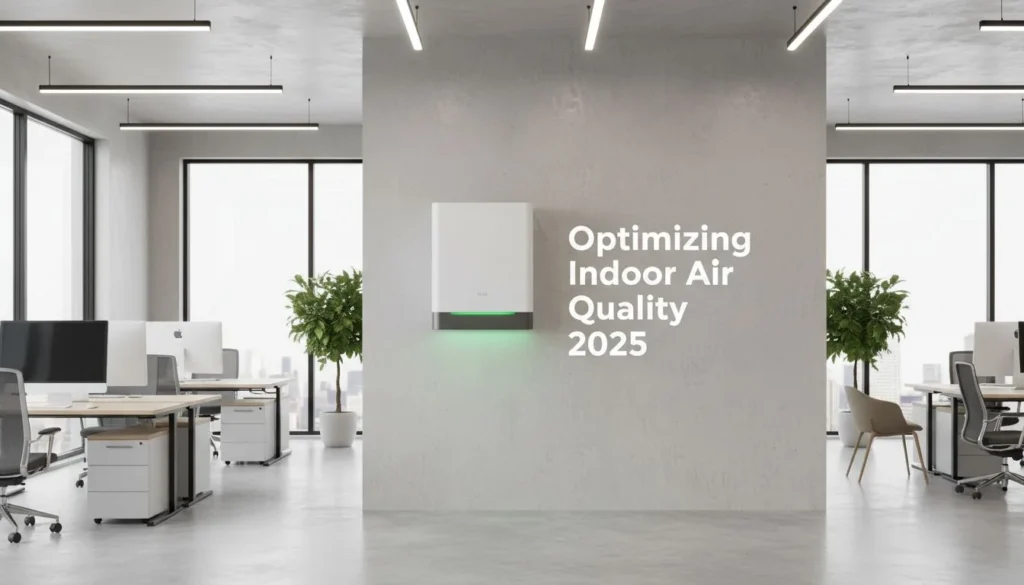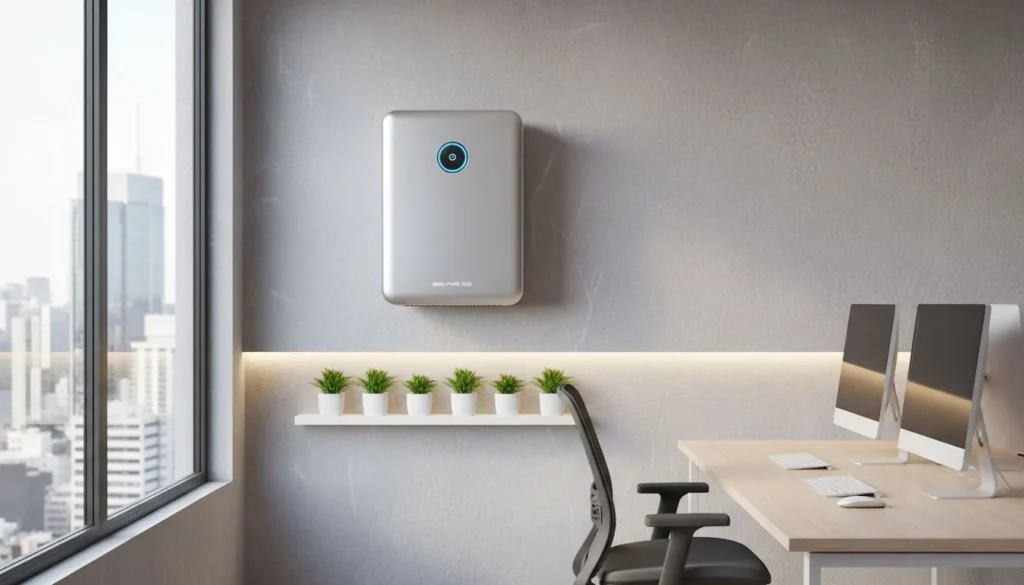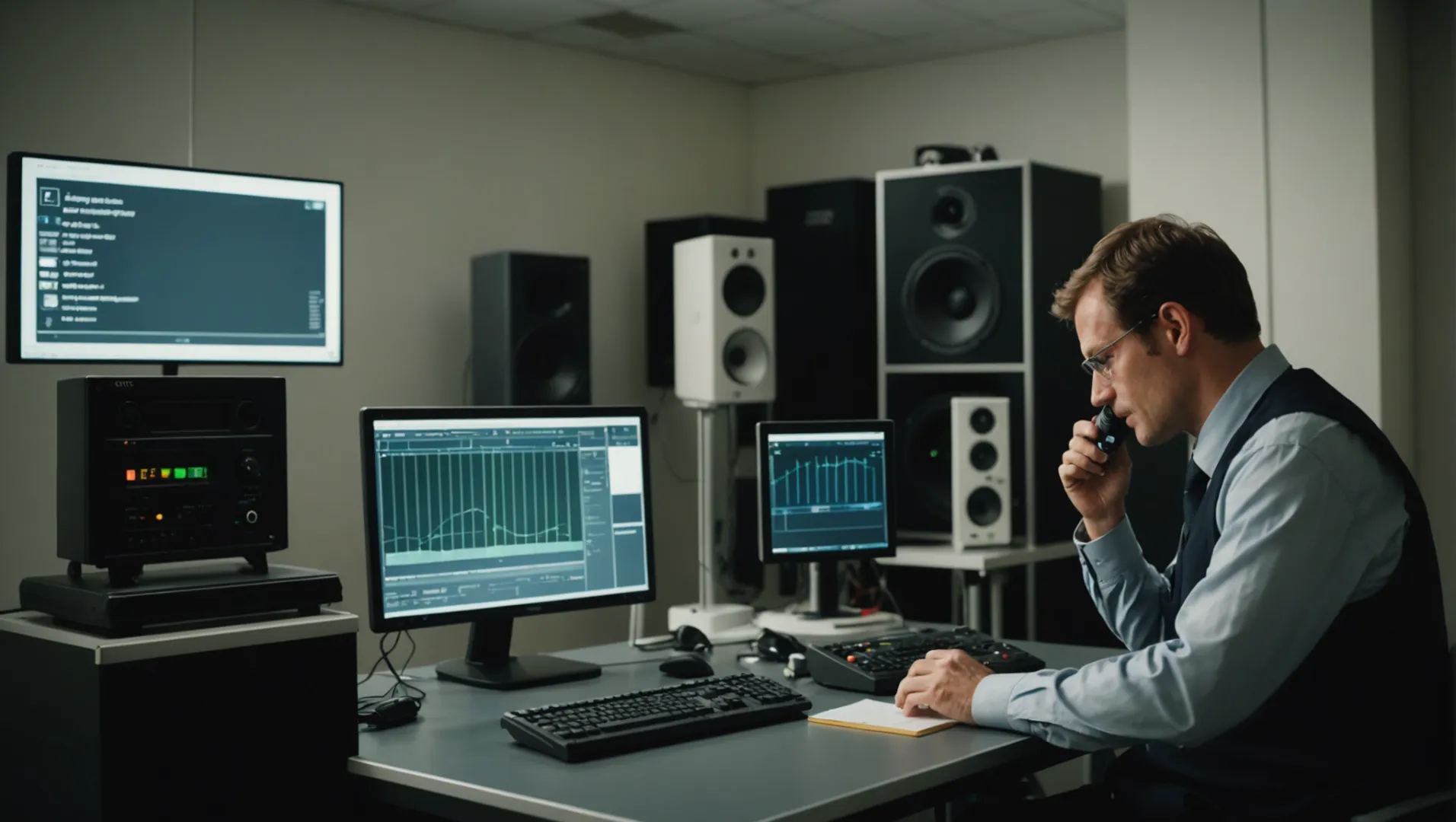
Are you tired of noisy appliances disturbing your peace? Let’s dive into testing air purifier noise levels together!
To effectively test noise levels in air purifiers, use a professional noise testing room to avoid environmental interference, and distinguish between sound pressure and sound power measurements. Testing should align with the air purifier's performance for accurate results.
While this snippet provides a foundational understanding, the intricacies of noise testing are vast. Dive deeper into our detailed guide to learn about professional testing environments, measurement techniques, and how to balance performance with noise levels for optimal air purifier function.
Sound power remains constant regardless of environment.True
Sound power measures total energy emitted, unaffected by surroundings.
What Tools and Equipment Are Required for Noise Testing?
Before embarking on noise testing for air purifiers, it's crucial to have the right tools and equipment.
Essential tools for noise testing include sound level meters, noise dosimeters, calibrators, and anechoic chambers. These instruments help ensure precise measurements of sound pressure and sound power, essential for evaluating air purifier performance.
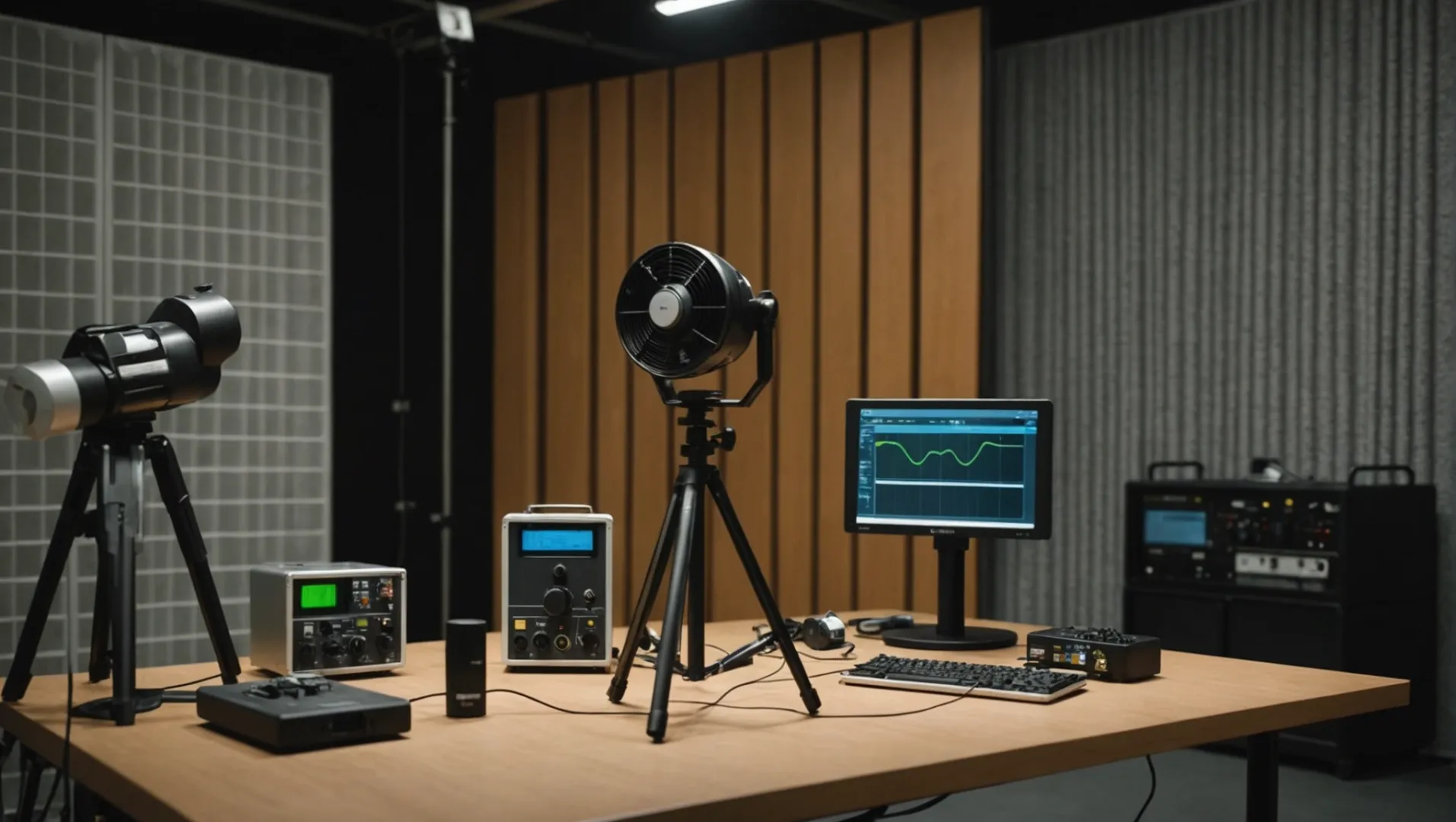
Understanding the Basics of Noise Measurement
To accurately test noise levels1 in air purifiers, several specialized tools are required. Here's a breakdown of the essential equipment:
- Sound Level Meters: These are used to measure the intensity of sound in decibels (dB). They are crucial for understanding the immediate noise level produced by an air purifier.
- Noise Dosimeters: While similar to sound level meters, these devices are used over longer periods to assess the average noise exposure. They're particularly useful in environments where noise levels fluctuate.
- Calibrators: To ensure accuracy, sound measuring devices must be calibrated. A calibrator provides a reference tone, allowing you to adjust your sound level meter accordingly.
- Anechoic Chambers: These are specially designed rooms that absorb reflections of sound. They provide a controlled environment for more accurate testing by eliminating external noise interference.
Sound Pressure vs. Sound Power
When measuring noise, it's important to distinguish between sound pressure and sound power:
- Sound Pressure is what we hear and is measured using sound level meters. It's the local pressure variation caused by sound waves.
- Sound Power, on the other hand, is the energy emitted by a source per unit of time and is a more intrinsic measure of a source's ability to generate sound. This is often used in industrial settings for precision.
In practice, sound power measurements2 require more sophisticated setups like anechoic chambers and multi-point testing to determine the complete sound profile of an air purifier.
Standard Testing Procedures
Noise testing must adhere to standardized procedures to ensure consistency and comparability of results. For air purifiers:
- Nine-Point Testing: This involves measuring at various angles and distances around the air purifier, typically at one meter away. This method helps in capturing the complete noise emission profile.
- Adhering to Standards: Utilize guidelines from bodies like AHAM for the US market, which provide specific protocols for testing.
Understanding these tools and methods not only improves the precision of your measurements but also helps in designing quieter, more efficient air purifiers.
Sound level meters measure sound intensity in decibels.True
Sound level meters are designed to measure sound intensity in decibels (dB).
Anechoic chambers amplify external noise for accurate testing.False
Anechoic chambers absorb sound reflections, eliminating external noise interference.
How Do Sound Pressure and Sound Power Differ in Measurements?
Understanding the difference between sound pressure and sound power is crucial for accurate noise level testing.
Sound pressure measures the local variations in air pressure caused by a sound wave, while sound power quantifies the total energy emitted by a source. Sound pressure levels can fluctuate based on distance and environment, whereas sound power remains constant, providing a more stable reference for comparing different sources.

Sound Pressure: The Audible Experience
Sound pressure is often what we refer to when discussing how loud something seems to us. It measures the fluctuations in air pressure at a specific point and is typically expressed in decibels (dB). The sound pressure level3 (SPL) is affected by the distance from the source and environmental conditions, like walls or objects that might reflect or absorb sound. This variability makes it a practical measurement for consumer products, as it reflects real-world listening conditions.
Sound Power: The Source's Signature
Sound power, on the other hand, refers to the total amount of sound energy emitted by a source, measured in watts. Unlike sound pressure, sound power remains constant regardless of the surrounding environment or distance from the source. This consistency makes it a valuable metric for industrial applications where precise control over noise emissions is crucial.
Practical Implications of Measurement Differences
In consumer markets, such as with air purifiers, sound pressure measurements are often used due to their relevance to user experience. However, for designing high-performance air purifiers with low noise levels, understanding sound power measurements4 is essential. For instance, reducing the sound power output can lead to a quieter device overall, even if sound pressure levels vary based on placement within a room.
| Measurement Type | Units | Influences | Applications |
|---|---|---|---|
| Sound Pressure | dB | Distance, Environment | Consumer Products |
| Sound Power | Watts | None | Industrial Design |
Choosing the Right Measurement
Selecting between sound pressure and sound power depends on the application's focus. If the goal is to ensure users experience a quiet environment, focusing on sound pressure levels5 is beneficial. Conversely, for engineering purposes where consistent output is needed, sound power provides a more reliable benchmark.
Sound power is measured in decibels (dB).False
Sound power is measured in watts, not decibels.
Sound pressure levels vary with distance from the source.True
Distance affects sound pressure levels, altering how loud sound seems.
Why Is a Professional Noise Testing Room Important?
Discover why a professional noise testing room is crucial for accurate air purifier assessments.
A professional noise testing room minimizes environmental noise interference, ensuring precise and reliable measurements of air purifier noise levels.
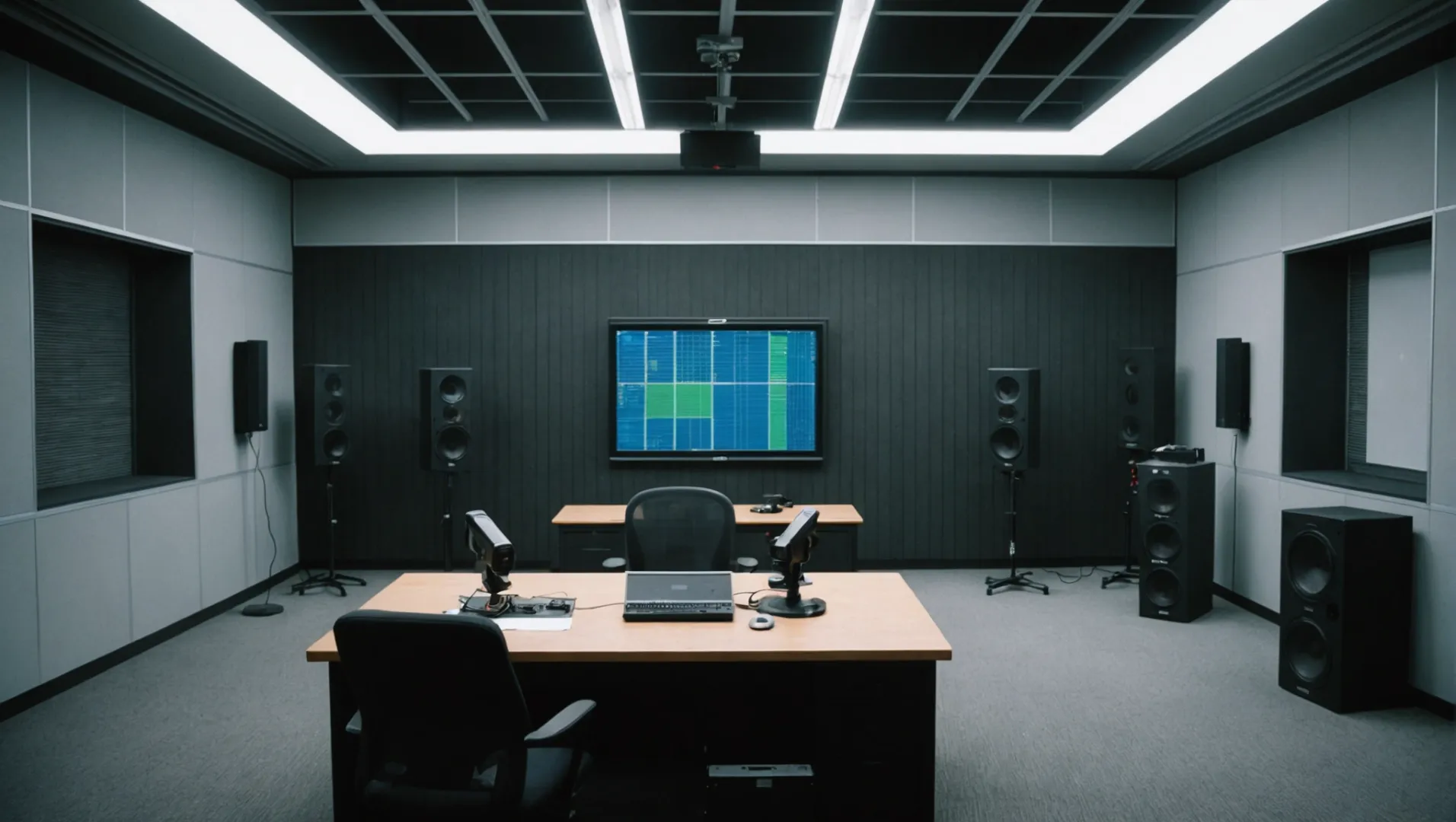
Ensuring Accurate Measurements
A professional noise testing room is essential to achieving precise and consistent results when measuring the noise levels of air purifiers. Without such a controlled environment, external noises could easily skew the readings, leading to inaccurate assessments that do not truly reflect the air purifier's performance. By isolating the device in a specialized room, testers can focus solely on the sounds produced by the air purifier itself.
Distinguishing Between Sound Pressure and Sound Power
In the realm of noise testing, it's critical to differentiate between sound pressure and sound power. Sound pressure, often used in consumer markets, represents the audible sound level at a given point and can vary based on the environment. Conversely, sound power quantifies the total acoustic energy emitted by the device, offering a more precise metric favored in commercial settings.
A professional noise testing room enables accurate measurement of both sound pressure and sound power by providing a stable environment free from external influences. This clarity is particularly important when designing high-performance air purifiers with minimal noise.
Balancing Performance with Noise Levels
Air purifiers must balance efficient operation with acceptable noise levels. A professional testing environment allows manufacturers to rigorously assess this balance by employing techniques like multi-point testing6. This involves taking measurements from various angles around the device, such as front, back, sides, and top, typically from a distance of one meter. Such comprehensive testing ensures that noise levels are kept in check without compromising the purifier's performance.
Industry Standards and Compliance
Adhering to industry standards is another reason why a professional noise testing room is indispensable. Standards such as those from AHAM (Association of Home Appliance Manufacturers) guide the testing procedures to ensure consistency across products. These standards specify how and where measurements should be taken, making it essential for manufacturers to have access to facilities that can meet these rigorous requirements.
In summary, a professional noise testing room is not just about achieving low decibels; it's about ensuring that air purifiers deliver their best performance while maintaining user comfort through acceptable noise levels. This balance is critical in today's competitive market where consumers demand both quiet operation and efficient air purification.
Professional noise testing rooms reduce external noise interference.True
These rooms are designed to minimize environmental noise, ensuring precise measurements.
Sound pressure and sound power are identical in noise testing.False
Sound pressure varies by environment; sound power measures total acoustic energy.
How Can You Balance Performance and Noise in Air Purifiers?
Balancing performance and noise in air purifiers is crucial for optimal function without disturbance.
To balance performance and noise in air purifiers, test noise levels using sound power measurements, considering fan speed, and employing advanced technology for quieter operation.

Understanding the Trade-off Between Performance and Noise
Air purifiers operate by circulating air through filters to remove pollutants. The effectiveness of this process largely depends on the fan speed and the type of filtration system used. Generally, higher fan speeds improve air cleaning performance but also increase noise levels. Therefore, achieving a balance requires strategic adjustments.
The Role of Fan Speed and Technology
Manufacturers often integrate variable speed controls, allowing users to adjust the fan speed according to their needs. High-performance settings might be suitable during peak pollution times but can be noisy. Conversely, a lower setting might suffice for nighttime use when quiet operation is preferred.
Recent technological advancements have led to the development of more efficient fans and motors that produce less noise without compromising performance. Technologies such as HEPA filtration systems7 and activated carbon filters are designed to maximize air purification while minimizing acoustic output.
Using Sound Power Measurements for Noise Control
Sound power level measurements are generally more accurate than sound pressure levels, especially in commercial and industrial settings. This approach involves assessing the sound emitted from the purifier itself rather than the sound perceived by human ears, which can vary depending on environmental factors.
A comprehensive noise test should involve measuring at multiple points around the air purifier — front, back, sides, and top — typically at a standard distance of one meter. This provides a clearer picture of the noise profile across different operational modes.
| Measurement Type | Description | Application |
|---|---|---|
| Sound Power | Total acoustic energy emitted | Preferred for design and engineering |
| Sound Pressure | Perceived noise level by humans | Common in consumer evaluations |
Implementing Design Innovations
Incorporating design features such as insulated casings, sound-absorbing materials, and aerodynamic fan blades can further aid in noise reduction. Some advanced models include smart sensors that automatically adjust fan speed based on air quality, maintaining a balance between performance and quiet operation.
By focusing on these elements, manufacturers can create air purifiers that meet both high performance standards and low noise expectations, offering consumers the best of both worlds.
Higher fan speeds increase air purifier noise.True
Increasing fan speed enhances air cleaning but raises noise levels.
HEPA filters reduce noise in air purifiers.False
HEPA filters improve purification but do not directly reduce noise.
Conclusion
Understanding noise testing can guide you to the perfect air purifier, balancing efficiency with tranquility.
-
Discover comprehensive lists of tools essential for accurate noise testing.: Assessing the noise level produced by an air purifier is crucial. We use a specialized tool to measure noise levels on the dBA scale and test each air purifier ... ↩
-
Learn about the key differences between sound pressure and power.: In the case of a sound power level the reference value is 10-12 Watts whereas the reference value for sound pressure level is 2.10-5 pascals. ↩
-
Explore how sound pressure levels impact auditory experiences.: Sound pressure level (SPL) is the pressure level of a sound, measured in decibels (dB). It is equal to 20 x the Log10 of the ratio of the Root ... ↩
-
Understand the significance of sound power in product design.: Industrial noise - also known as industrial noise pollution - refers to unwanted or excessive sound produced by industrial activities and processes. ↩
-
Learn about the influence of SPL on consumer perceptions.: This PNR rating will help consumers better understand and compare the noise from products that they might want to purchase. ↩
-
Learn why multi-point testing ensures comprehensive noise level assessments.: To test the DIY air filter I decided to cook the same meal four times and run the fan on high for two of the tests. ↩
-
Learn how HEPA systems balance purification efficiency with noise reduction.: HEPA is a type of pleated mechanical air filter. It is an acronym for high efficiency particulate air [filter] (as officially defined by the US Dept. of Energy ... ↩


